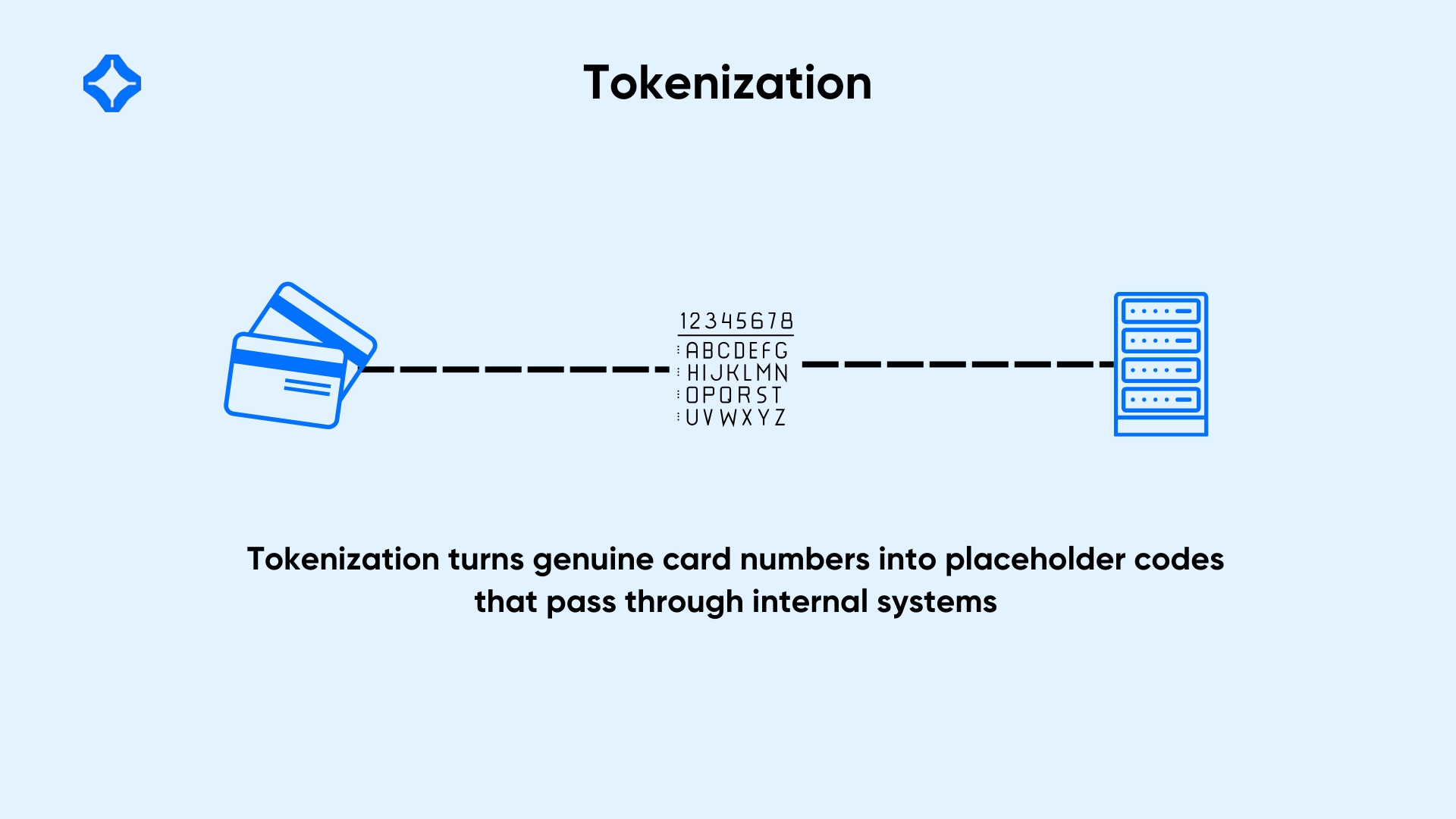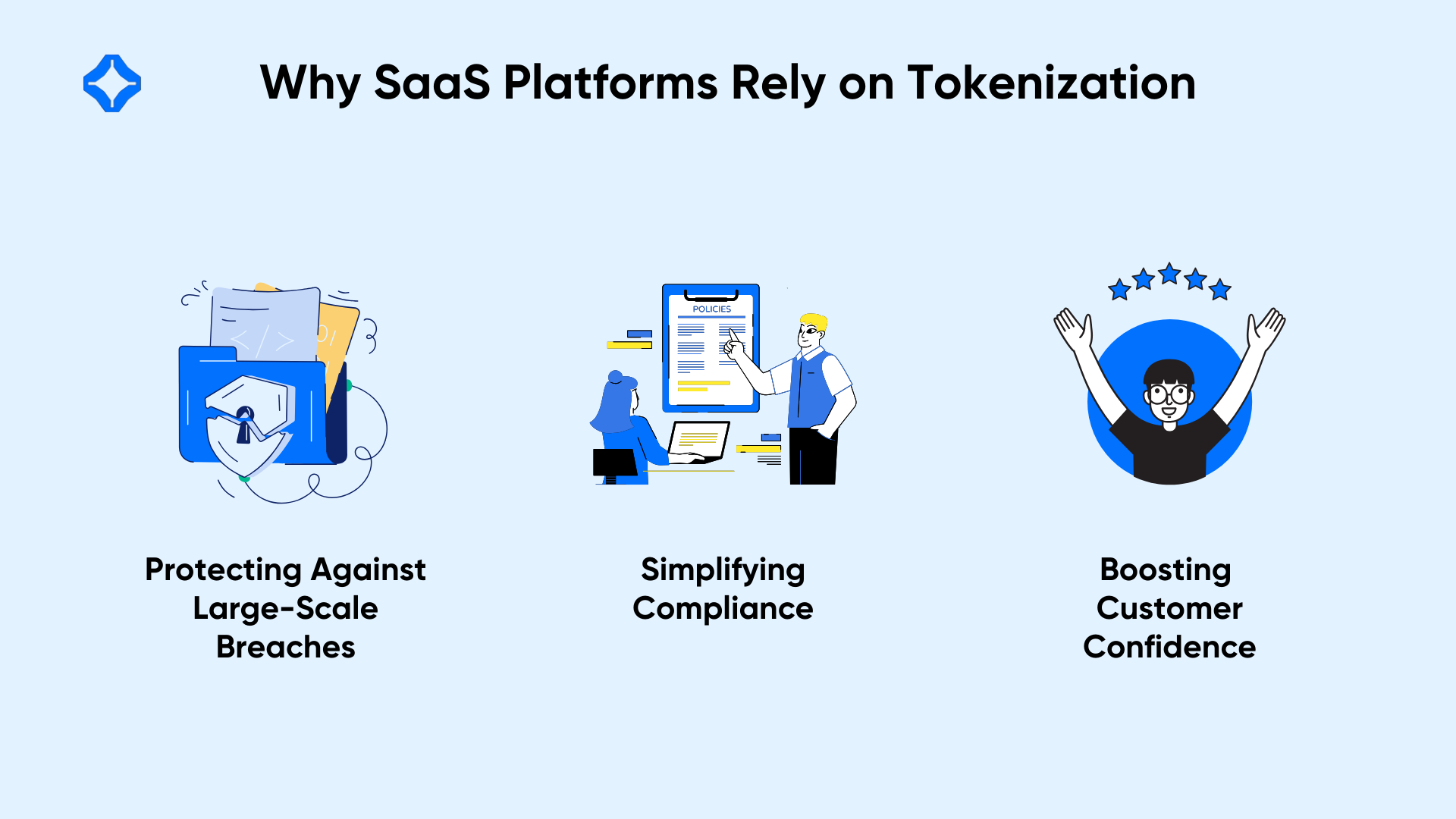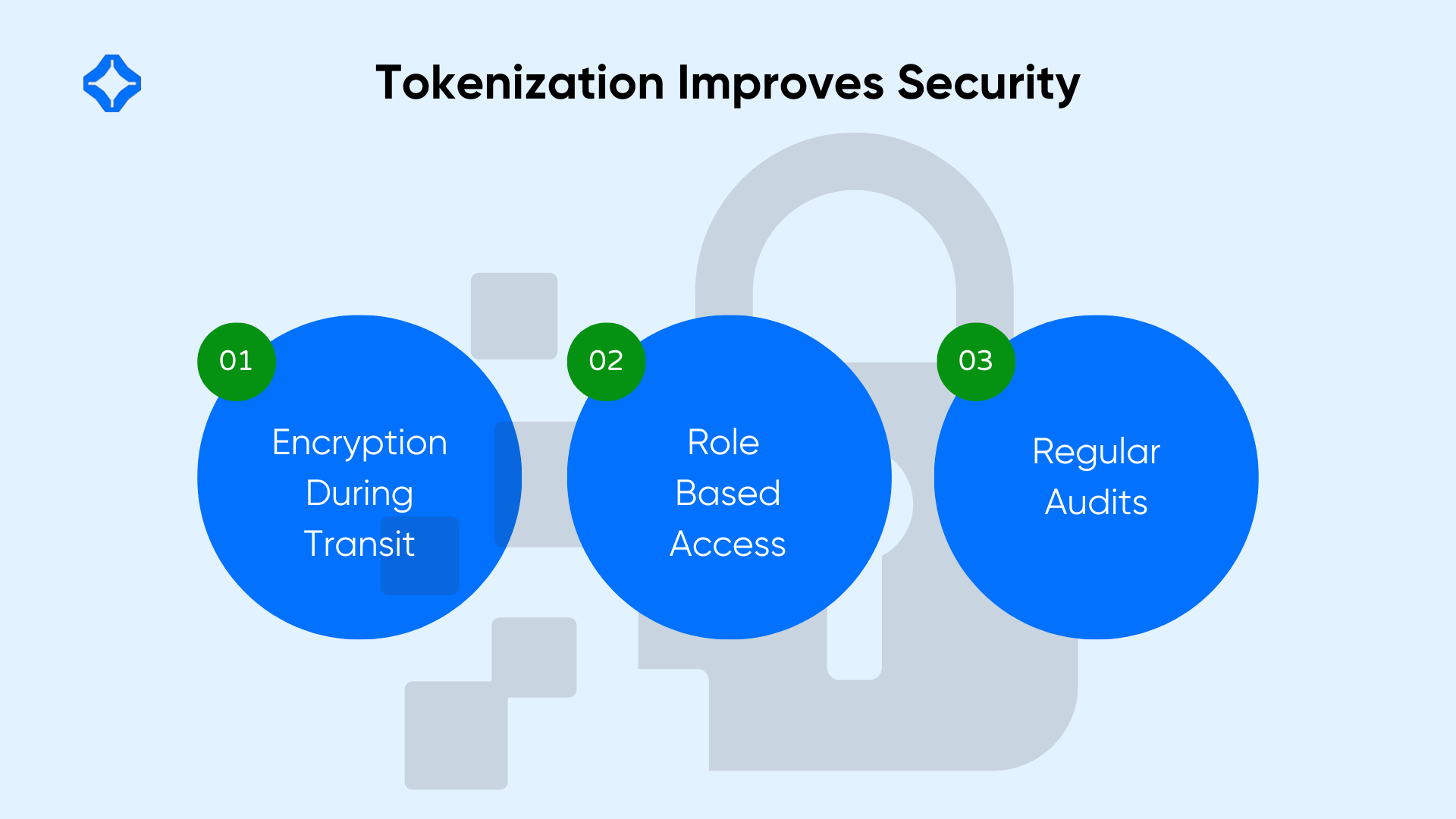Modern businesses depend on seamless payment experiences that keep cardholder data hidden from prying eyes. Users trust SaaS platforms to charge their accounts securely without fear of losing vital details to attackers. Tokenization stands out as a key strategy that replaces real payment info with random tokens. By removing raw data from typical workflows, organizations reduce the chance of massive leaks or brand damage.
Below, we explore how tokenization supports safer payment operations in SaaS. We examine fundamental concepts, industry trends, and best practices for integrating tokens effectively.
A Substitute for Cardholder Data

Tokenization turns genuine card numbers into placeholder codes that pass through internal systems. A token reveals nothing about the user’s account or identity, so it serves as a stand-in during transactions. The actual credentials remain locked away in a secure vault or external gateway, away from an organization’s main infrastructure. If criminals steal a token, they cannot extract sensitive payment info.
This method reduces the scope of systems that must handle raw card data. By restricting direct access, SaaS businesses protect themselves from major breaches. Payment gateways oversee the mapping between tokens and real numbers, ensuring that legitimate charges are still clear. The SaaS platform deals with tokens, allowing it to process invoices or subscriptions without seeing personal card data.
Responding to Modern Threats
Credit card breaches undermine trust, harming both clients and businesses. Attackers target cloud databases, insecure endpoints, or overlooked logs to grab payment records. Because many SaaS platforms run global operations, a single vulnerability can put thousands of accounts at risk. Tokenization addresses that fear by removing raw details from day-to-day tasks.
Tokens can still enable refunds, recurring billing, or account updates, but they do not endanger cardholders. This design pleases regulators, who demand strict standards for storing and transmitting payment info. It also assures customers that their data is shielded under multiple layers. In effect, tokenization reduces possible exposures while supporting routine billing cycles.
Minimizing Compliance Overhead
An enterprise that directly stores card numbers faces stricter PCI DSS obligations. They must track who can see those records, encrypt data at rest, and document every relevant process. Tokenization moves those burdens to specialized vault providers. The SaaS platform manages tokens instead of raw credentials, shrinking compliance scope.
Even so, organizations remain responsible for safe token usage. They must confirm that tokens never appear in logs or that old tokens are not left behind in orphaned systems. With a thorough plan, they can maintain a simpler environment. By showing that card data never touches local servers, they reduce the time and cost of audits.
Core Mechanics of Tokenization
Generating Secure Tokens
The user enters card details into a form that immediately interacts with a secure API. That service returns a randomly generated token, often a string with no direct link to the original data. Inside the gateway or vault, a lookup table associates that token with the card number. For every future charge, the SaaS platform references the same token, letting the gateway handle the real data.
These tokens do not follow patterns that thieves can reverse. They might look like random alphanumeric sequences, ensuring that partial leaks do not hint at actual card digits. If a token is revealed, it cannot be used outside the correct gateway environment. Attackers cannot decode it to reveal the real account or misuse it at other vendors.
Storing and Retrieving
During recurring billing, the SaaS system accesses tokens for each cycle. The gateway verifies that the token remains valid and then charges the user’s account. If the user updates their card info, the gateway issues a fresh token. This cycle keeps the raw number hidden at all times. The SaaS platform only sees tokens, so no one on staff can read personal card data.
Vault providers handle advanced steps like card expiration checks or card type validations. Each token thus stays accurate until the card is canceled or reissued. Meanwhile, local systems keep tokens in place of complete details. That tactic blocks front-end or database leaks from exposing real credentials.
Lifecycle Management
Tokens sometimes last indefinitely, but best practices may involve rotating them. If a user requests a new card or if the system detects suspicious activity, the gateway might generate a replacement token. SaaS developers should design processes that handle token refresh events gracefully. Otherwise, old tokens might trigger failed charges or cause confusion among billing staff.
Systems must track each token’s status, ensuring that any that are no longer needed get removed. This tidiness keeps the environment free from clutter and reduces the chance of referencing stale tokens. Proper lifecycle management forms the backbone of reliable and secure token-based payments.
Why SaaS Platforms Rely on Tokenization

Protecting Against Large-Scale Breaches
SaaS companies often store vast amounts of user data across multiple services. A single misconfiguration in one region can open floodgates for hackers. If raw card records exist in those servers, the breach escalates quickly. By tokenizing upon entry, payment data never resides in general-purpose systems. Attackers who raid the main database find worthless tokens.
With fewer high-value targets, criminals might move on to easier picks. The payoff for hacking a token-only repository is too small. Even if they compromise vault credentials, a well-designed SaaS cloud security environment may force them through separate authentication steps. That split architecture helps keep theft minimal.
Simplifying Compliance
Compliance like PCI DSS call for strict controls on cardholder data. Storing raw info triggers many demands, including encryption, frequent audits, and robust network segmentation. Tokenization slashes the number of systems in scope. Only the vault or gateway truly touches card credentials, while the rest of the SaaS stack sees tokens alone.
Audits become less time-consuming because external providers handle the brunt of secure storage. The SaaS operator simply proves that no real data crosses into logs or application code. People can build billing flows or subscription tiers without fear of mismanaging raw numbers. This approach speeds up product development, letting teams focus on new features.
Boosting Customer Confidence
Users want frictionless transactions that do not risk their personal funds. A security breach can drive them to competitors, harming revenue and brand image. Promoting tokenization as a protective layer helps reassure them that their data remains guarded. Even if a malicious actor gains partial access, the real card is still safe.
Trust also grows when customers realize that internal staff cannot peek at their numbers. They see a platform that respects privacy by design. Returning users appreciate that the site “remembers” their card details through tokens and also never places them at undue risk. Confidence in security then translates to loyalty, higher spending, or greater retention rates.
Practical Examples of Tokenization
Subscription-Based Services
SaaS businesses often rely on recurring charges. A user signs up for monthly or annual billing, expecting trouble-free renewals. Tokenization ensures each renewal pulls from a token that references the correct card. If the user updates their info, the gateway issues a new token, preserving an uninterrupted billing cycle.
Support staff can process refunds or upgrades using the same token. They never see actual digits, meaning they face minimal accountability for direct card data. In the event of a partial system compromise, old tokens do not reveal sensitive details. The recurring model operates smoothly without repeated demands to re-enter credentials.
In-App Purchases
Mobile or web apps sometimes include microtransactions, letting customers buy add-ons or credits. Secure flows place an overlay that calls a payment gateway, exchanging details for tokens. The app’s backend only sees tokens, which it uses for final order confirmations or usage tracking. This design builds consistent user experiences because the payment step is swift and shielded from prying eyes.
If the platform extends to new regions or partners, the tokens remain valid. There is no need to store thousands of unique numbers in each local data center. This approach cuts overhead for expansions, letting the gateway handle new countries or currencies. The SaaS side just passes tokens along.
E-Commerce Extensions
Some SaaS solutions offer e-commerce modules as part of their product. Perhaps they handle inventory, shipping, and checkout for third-party merchants. Tokenization gives each merchant a safer environment since no raw info enters the SaaS vendor’s main database. Each transaction flows from the shopper’s device to the gateway, returning only a token for confirmation.
By standardizing on token-based flows, the SaaS provider can onboard multiple stores without rewriting the security code for each. Merchants rest easier knowing that even a database breach at the SaaS level will not leak real card data. The final mapping remains hidden behind the gateway’s encrypted vault, cutting the merchant’s compliance worries.
Integrating with Existing SaaS Architecture
Early Steps in the Payment Cycle
In typical SaaS flows, a user visits the checkout or billing page. JavaScript or hosted forms gather card data, sending it directly to the gateway’s tokenization endpoint. The SaaS backend never sees raw digits, which spares it from advanced PCI checks. Once the token returns, the backend references that code for future transactions.
This approach demands careful design to ensure no logs or debug statements inadvertently capture card numbers. Developers set up event hooks that retrieve tokens from the gateway and then store them in the internal database under each customer’s profile. Each new purchase or subscription uses the token as a reference, skipping any need for re-entry.
Managing Vaults and APIs
Gateways or vault providers deliver APIs for creating, updating, or voiding tokens. SaaS developers integrate these endpoints, often with client libraries or direct calls. They keep track of token states, such as active or expired, in case the card changes or the user decides to remove it. If a user unsubscribes, the system can free that token to prevent future billing.
Sometimes, gateways rely on temporary tokens that last a short time, while others exist indefinitely. In recurring billing, indefinite tokens make sense but might require occasional revalidation if the card expires. Meanwhile, temporary tokens can protect one-time payments, limiting the window of possible misuse.
Linking Multiple Payment Methods
Customers might have multiple cards on file. The SaaS platform stores a token for each, labeling them as “primary,” “backup,” or tied to certain subscription tiers. If the primary fails, the system tries the backup token before prompting the user. This logic keeps transactions successful but never lifts the mask on actual card numbers.
Internal staff track usage and statuses, marking tokens as paused or reactivated based on user requests. Detailed logs note which token was used for each transaction but do not show real digits. That design preserves privacy while ensuring flexible payment flows for advanced billing scenarios.
Addressing Ongoing Security

Encryption During Transit
Tokens help, but they must still travel safely between servers. Encryption ensures that tokens are not intercepted or altered en route. HTTPS endpoints and secure sockets shield data from eavesdroppers. Some gateways also require client certificates or advanced cryptographic checks for high-risk transactions.
Even though tokens lack direct value outside the gateway’s context, a stolen token might still allow fraudulent charges if the thieves compromise the associated merchant ID. End-to-end encryption reduces that possibility by blocking snooping, especially on public networks or in multi-tenant cloud setups.
Role-Based Access
Not every employee should manipulate tokens or run refunds. Role-based permissions define who can view, create, or delete tokens. For example, finance staff might handle partial refunds, while support can only read payment status. The principle of least privilege ensures that no one gains unneeded powers to tamper with sensitive payment flows.
Comprehensive logs track every token action and link it to a user. That record proves invaluable during audits or if suspicious activity arises. A manager can see that a particular staff member initiated an unusual transaction or removed a set of tokens. That transparency deters insider abuse and helps tighten procedures.
Regular Audits
Tokenization shrinks the amount of raw data in the environment, but it does not remove all oversight needs. Regular audits confirm that logs do not contain sensitive details, old tokens have been retired, and integration points remain secure. If the gateway changes API versions, the SaaS side must adapt to keep everything in sync.
Firms may conduct penetration tests or code reviews to find weaknesses in the token flow. If a compromised system tries to bypass tokenization, the team must detect that quickly. Automated alerts can watch for repeated unauthorized calls or strange token usage patterns. By staying vigilant, the company preserves user confidence and compliance.
Common Challenges and Potential Roadblocks
Vendor Lock-In
Some gateways format tokens in ways that do not migrate easily to another service. Companies face large rewrites if they decide to switch providers or unify multiple payment tools. That risk underscores the importance of standard token formats or layering code that can adapt. Otherwise, expansions or new acquisitions become complicated as they attempt to merge tokens from separate systems.
Partial Tokenization
If a SaaS platform only applies tokenization in some flows, raw data might still appear in backups or debug logs. That partial coverage undermines the entire approach. Attackers can hunt for missed spots. Thorough training and code checks help staff confirm that no step in the chain handles raw numbers. Even a single log statement with partial digits can invite trouble.
Operational Errors
Tokens must remain correct throughout the subscription lifecycle. If a database mismatch occurs, the SaaS system might try an invalid token. That can cause payment failures or double billing if the system falls back incorrectly. Good housekeeping includes conform tokens monthly, ensuring they align with active subscriptions and user accounts.
A gateway outage also disrupts token creation, preventing signups or purchases. Teams may build fallback paths that store temporary data, but this reintroduces risk. A better solution is to queue requests until the gateway recovers and then generate tokens safely. Planning for downtime helps maintain a frictionless user experience.
Expanding Tokenization Approaches
Vault Consolidation
Enterprises with multiple SaaS products may unify tokens in a single vault. That central resource manages card info for all business lines. The upside is fewer integration points and uniform policies.
The downside is potential single points of failure or complexity if the vault is offline. Still, many large firms prefer a single repository for consistent oversight and shared security improvements.
Advanced Payment Flows
Tokens unlock more complex billing scenarios, such as on-demand usage or usage-based plans. The SaaS collects usage metrics, calculates costs, and charges the token at set intervals.
If an account maxes out a threshold, the system can run immediate charges by referencing the user’s stored token. That flexibility supports dynamic price structures, which are popular in modern pay-as-you-go services.
Combining with Biometric or Multi-Factor Steps
Some SaaS platforms require stronger user verification for high-ticket transactions. They may prompt two-factor codes or biometric checks before calling the token. That extra step deters unauthorized staff or stolen sessions from launching large charges. Meanwhile, the user remains confident that no one can exploit the token stored behind their back. This layered approach merges convenience with robust authentication.
Conclusion
Tokenization cuts the direct handling of sensitive payment data, reducing liability for SaaS operations. By mapping real card numbers to random tokens, companies sidestep significant risk if hackers compromise their systems. They also streamline compliance tasks because fewer components store or process raw details.
As regulations grow stricter, tokenization remains a top defense against catastrophic data leaks. By cutting raw card exposure, SaaS businesses can focus on delivering innovation while keeping user trust intact.
FAQs
Encryption encodes real data so it can be decoded with the right key. Tokenization creates placeholder codes that have no direct relationship to the original card digits. Even if attackers grab tokens, they cannot reverse them to reveal card numbers.
It lowers the scope of PCI DSS but does not eliminate all responsibilities. Firms must safeguard tokens themselves, enforce strong access controls, and monitor logs for suspicious events. Tokenization removes the direct storage of card numbers but still requires ongoing diligence.
Vendor lock-in arises if a gateway uses proprietary token formats. Companies that embed tokens deeply may face complications when migrating. One solution is to use an abstraction layer or standardized tokens that ease transitions between providers.